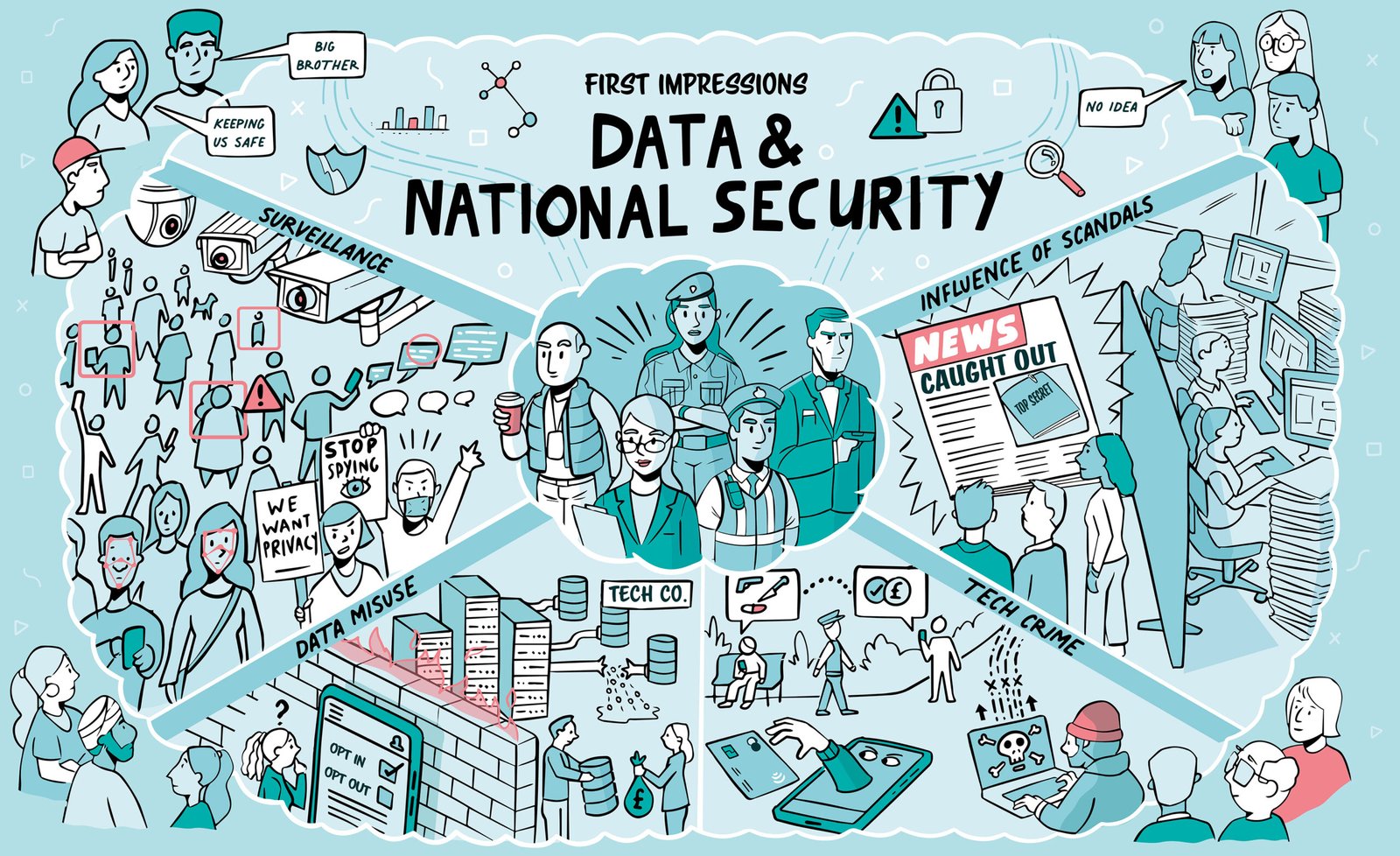Introduction to Generative AI in Counterterrorism
Generative AI represents a class of artificial intelligence technologies that can create content including text, images, audio, and even video, often indistinguishable from human-created materials. This innovative technology employs algorithms such as deep learning and neural networks to generate outputs that can range from simple text messages to complex visual representations and deep fakes. The emergence of generative AI has sparked a transformative potential in various fields, particularly in counterterrorism, where its capabilities are being harnessed to bolster national security efforts.
In the realm of counterterrorism, generative AI can play a crucial role in collecting and analyzing vast amounts of data. For instance, the technology can automate the detection of potential threats by processing social media content, communications, and other online data sources quickly and efficiently. By generating insightful patterns from this data, law enforcement and intelligence agencies can improve their situational awareness, helping them to preemptively address possible acts of terrorism.
Moreover, generative AI tools can create realistic simulations and training scenarios for counterterrorism personnel, enhancing their preparedness for real-world situations. As a result, they become more adept at formulating strategic responses to potential threats. While these capabilities promise substantial benefits, they also raise significant ethical concerns. The potential for misuse, particularly the creation of deep fakes or misleading information designed to confuse and manipulate audiences, poses challenges for policymakers and security professionals alike.
This introduction sets the stage for a comprehensive discussion on generative AI’s dual-edged impact on counterterrorism efforts, emphasizing the need for a balanced approach to leverage its strengths while mitigating associated risks effectively.
Enhancing Intelligence Collection and Analysis
The landscape of counterterrorism is significantly evolving due to the advent of generative AI technologies. These innovations are playing a pivotal role in enhancing intelligence collection and analysis, thereby enabling security agencies to identify potential threats more proactively. One of the key advancements in this field is the utilization of natural language processing (NLP) techniques, which allow for the effective analysis of vast amounts of textual data. NLP enables analysts to sift through social media posts, online forums, and other digital communications to detect early warning signs of radicalization or coordination among terrorist groups.
Additionally, machine learning algorithms are becoming essential tools in the predictive analytics arsenal. By employing advanced statistical methods, these algorithms can analyze historical data on terrorist activities and identify trends that may signify emerging threats. For instance, data from multiple sources can be cross-referenced to reveal patterns that might not be apparent through traditional analysis methods. This process not only increases the speed of analysis but also enhances accuracy, allowing agencies to allocate resources more efficiently and respond proactively to potential incidents.
A noteworthy example of generative AI in action is the monitoring of communications among suspected militants. AI systems can intercept various forms of communication, including encrypted messages, using sophisticated decryption techniques. This capability allows for real-time surveillance of potential terrorist cells, providing crucial insights that can be acted upon swiftly. Furthermore, integrating AI with social media analytics has proven successful in identifying key influencers and emergent narratives that could incite violence or mobilize radical elements within communities.
Such examples illustrate that generative AI is not just a supplementary tool but a transformative element in the framework of modern counterterrorism operations. As the technology continues to evolve, its role in intelligence collection and analysis will likely grow, ultimately leading to more informed and effective counter-terrorism strategies.
The Dual-Edged Sword: Risks and Challenges
Generative AI, while instrumental in advancing counterterrorism strategies, introduces significant risks that cannot be overlooked. One of the primary dangers lies in the potential misuse of this technology by terrorist organizations. These groups may harness generative AI to produce sophisticated propaganda that promotes their ideologies, spreading misinformation and disinformation more effectively than ever before. Such digital forgeries may involve creating deepfakes, fake news articles, or misleading audio recordings that can manipulate public perception and bolster extremist narratives.
The ease of access and the versatile capabilities of generative AI tools enhance the ability of malicious actors to engage in psychological warfare, thus complicating counterterrorism efforts. Law enforcement agencies may find themselves in a continual battle to discern reality from the synthetic media that these groups could generate. As misinformation proliferates, it undermines trust in legitimate media sources, thereby creating an environment ripe for radicalization and fear.
Moreover, the ethical implications related to the deployment of AI in counterterrorism highlight the potential for unintended consequences, such as racial profiling. There is a real concern that reliance on AI systems could lead to biased decision-making, reinforcing existing prejudices and amplifying societal divides. This presents a fundamental challenge in ensuring that the use of generative AI tools adheres to ethical standards while effectively combating terrorism.
Furthermore, regulatory frameworks surrounding generative AI technology are often inadequate, as authorities grapple with the balance between security measures and the preservation of civil liberties. The rapid advancement of AI capabilities often outpaces legislation, leading to significant hurdles in enforcement. These complexities underscore the necessity for a nuanced understanding of both the potential benefits and the multifaceted risks associated with integrating generative AI into counterterrorism measures.
Future Directions and Recommendations
The integration of generative AI into counterterrorism efforts presents both opportunities and challenges. As the technology continues to advance, ongoing research will be crucial to understanding the implications and enhancing its effectiveness in combating terrorist threats. Future developments in generative AI could lead to improved predictive analytics, enabling agencies to better assess and respond to risks associated with terrorism. Moreover, the potential for AI to simulate scenarios could improve training for law enforcement personnel, allowing them to navigate complex situations more effectively.
To maximize the benefits of generative AI, governmental and non-governmental organizations should foster collaboration between technology companies and law enforcement agencies. Such partnerships can catalyze innovation while ensuring that tools developed are aligned with the specific needs of counterterrorism. For example, regular workshops and strategic forums could be organized to facilitate knowledge sharing and resource allocation, allowing both sectors to work in synergy to develop solutions tailored for security challenges.
Moreover, the establishment of regulatory frameworks is essential. These frameworks should not only focus on the ethical use of AI but also account for privacy concerns and civil liberties. By instituting clear guidelines for the deployment of generative AI in counterterrorism, agencies can strike a balance between leveraging technology to ensure public safety and protecting the rights of individuals. Additionally, investing in training programs for personnel is critical. Comprehensive training can empower law enforcement officers to utilize AI tools proficiently while adhering to ethical standards.
Ultimately, the future of generative AI in counterterrorism will hinge on a collaborative approach that prioritizes safety, ethical considerations, and rights protection. By embracing these recommendations, agencies can position themselves to navigate the evolving landscape of technology while effectively managing the complexities of modern threats.









